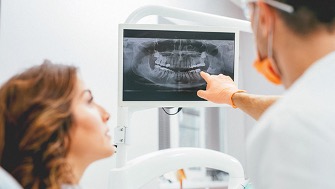What sets one dentist apart from another?

The requirements to become a dentist are rigorous, ensuring a high academic achievement quality and several years of practical education before seeing patients.
To be a Dentist, you had to pass the Dental Admissions Test (DAT). Along with their DAT scores, most students also need to have a good GPA, and excellent recommendation letters. Most dental schools are four-year programs and will either award a Doctor of Dental Surgery (DDS) or a Doctor of Medicine in Dentistry (DMD). There is only one school that provides a 4-year curriculum in three years – the University of the Pacific.
During the 4-year school-based education and after dental school is complete, a student needs to take and pass a series of examinations. The American Dental Association notes three critical requirements to licensure: an educational component, a written test, and a clinical examination. Besides these three components, additional requirements for licensure vary by state – two national boards and regional boards. (A regional board will cover multiple states). The dentist will apply for an individual state license from each state he/she wants to have a license in.
But fulfilling all the above does not make all dentists equal.
Additionally, Dr Lichtenstein is one of the few dual-trained dentist anesthesiologists in New Jersey who is Board Certified with over 20 years of experience. What separates Dr. Lichtenstein from almost every other dentist is that he is a hospital residency trained anesthesiologist.

Have your previous dentists given you a complete and comprehensive exam at each visit?
Dr. Lichtenstein’s Dental Examination is both unique and extensive, it includes:
- Medical History Review–Your dentist cannot safely treat you without knowing your medical history. In Dr. Lee Lichtenstein’s office, you will receive an extensive and comprehensive review of your medical history. This is due to the fact that he provides special sedation and anesthesia services for many patients.
- Blood pressure and heart rate check to be sure you are not in distress at your time of visit.
- Dental history review and discussion of what brought you in-knowing your dental history and any complaints you have will allow them to pinpoint any issues; past and present.
- Discussion of the philosophy of his practice makes you an educated patient
- Oral Cancer Exam of mouth, head, and neck – Oral & pharyngeal cancer makes up an estimated 3 percent of all cancer diagnoses each year, according to the National Institute of Dental and Craniofacial Research. That means 53,000 new cases of oral cancer per year which may possibly have been detected earlier.
- Soft Tissue Exam: the lips, cheeks, tongue, gums, hard and soft palate, floor of the mouth and mucous membranes can show signs of disease or illness.
- Dental Fitness Exam
- Temporomandibular Joint (TMJ) Exam to check normal jaw joint movement
- Periodontal Exam to assess your periodontal/gum and bone health
- Clinical home care evaluation for tarter, plaque and bleeding gums
- State of existing repair evaluation to check teeth, fillings, restorations, and bridgework
- X-rays
- Intra oral digital pictures of your teeth, gums, and oral tissue
- Models for study and diagnosis

